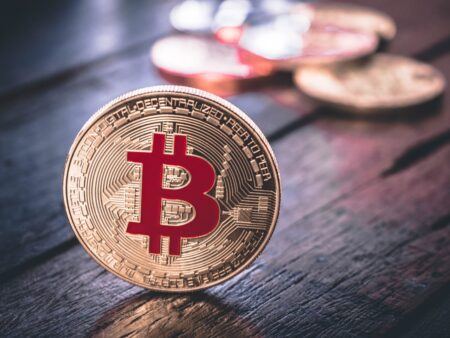In an article published earlier this week, Matthew Hougan, the Global Head of Research at Bitwise Asset Management, argues that Bitcoin is too volatile to be considered a “store of value”, but that is OK because if you want to become wealthy, what you really want is “an emerging store of value”.
Hougan’s article for Forbes, which came out on Wednesday (August 21), was addressing the claim made in a Barron’s article published on August 16 that questioned the claim that Bitcoin is a safe haven asset.
In particular, Hougan highlighted this paragraph from the Barron’s article:
This week certainly would appear to qualify as a good test for an asset’s safe-haven bona fides… There was a market meltdown in Argentina, escalating trade tensions between the U.S. and China, inversion of the Treasury yield curve (viewed as a recession indicator), grim economic news from Germany, and anti-government protests in Hong Kong.
The author of the Barron’s article was trying to point that despite all the global turmoil that week, Bitcoin ended the week down 10%.
Hougan says that we should not take from this that Bitcoin is not digital gold. He says that, in fact, Bitcoin is behaving just like gold did in the 1970s.
According to Hougan, “safe haven assets are supposed to be boring.” For example, he points out that gold’s annualized rate of return since 1980 is only 2.3% per year, which when adjusted for inflation, comes to -0.7% per year. In other words, it has been basically been “holding its value”, which is what you want in a “store of value.”
He then says that if, however, “you’re interested in wealth creation,” then “history suggests you don’t actually want a store of value; you want an emerging store of value” (i.e. “an asset that has all the characteristics of a store of value, but doesn’t yet have widespread acceptance amongst investors”).
Hougan looked at the history of gold and found that the “vast majority of returns gold has enjoyed in the modern era came in the 1970s”:
- 1970s: 1,365%
- 1980s: -22%
- 1990s: -28%
- 2000s: 281%
- 2010s: 50%
He says:
The 1970s was, of course, when the U.S. abandoned the gold standard. At the time, people didn’t know what to make of gold. Would it succeed as a 'safe haven' asset, untethered from the dollar, or be cast aside as a 'barbarous relic,' as John Maynard Keynes once called it?
The result was a period of significant volatility, as the two forces argued back and forth. There were years, like 1975, when gold tumbled in value, falling 25%. And years, like 1979, when it soared, rising 120%
He also says that the daily price volatility of 1970s gold was not that different from Bitcoin’s daily price volatility:
There was daily volatility too: In 1973, gold’s price moved more than 3% one out of every ten days! Sounds almost like bitcoin to me.
He then notes that just like the uncertainty about the future of gold back then made it a risky asset to own, it was that risk that “led to gold’s volatility and strong returns,” and that as “evidence mounted that gold would in fact continue to serve as a safe haven, returns spiked and more investors made gold a part of their portfolios.” Hougan believes that the same scenario is now playing out for Bitcoin.
Hougan considers Bitcoin to be “an emerging store of value” that will keep increasing in value over time as more and more investors “gain greater confidence in bitcoin’s place in the world” and as it gets “easier for institutional investors and financial advisors to buy.”
Featured Image Credit: Photo via Pixabay.com









